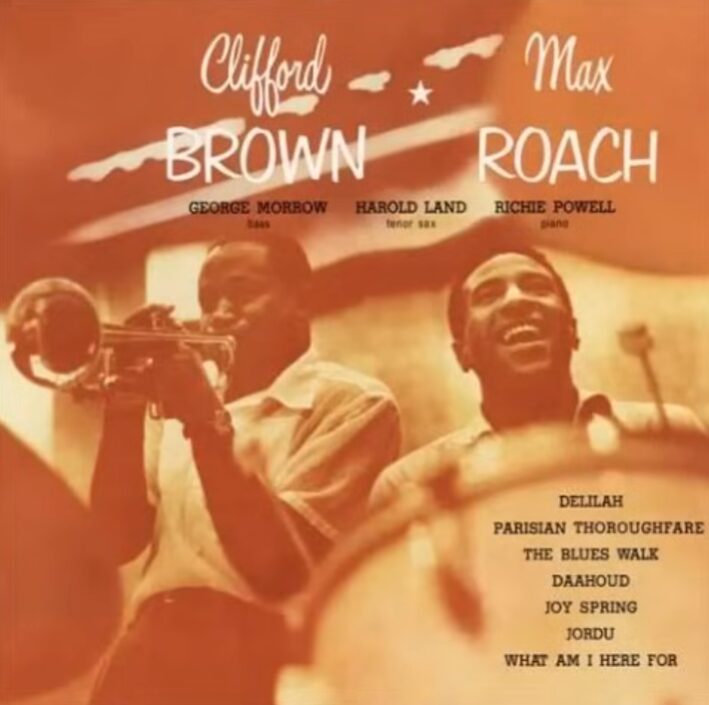The trumpet has been a defining voice in jazz since the genre’s earliest days. From the swinging sounds of the 1920s through bebop’s technical revolution and into modern jazz, trumpet players have continued to push boundaries and captivate audiences with their distinct voices and innovative approaches.
This curated listening list features five extraordinary trumpet performances from different eras and styles of jazz. Each selection showcases not only technical brilliance but also the unique expression and musical personality of these master musicians. Whether you’re new to jazz or a seasoned listener, these recordings offer a fascinating journey through the evolution of jazz trumpet.
Table of Contents
1. Clifford Brown – “Joy Spring” (1954)
Clifford Brown’s tragically short career (he died at just 25) left an enormous impact on jazz trumpet playing. His warm, rounded tone, impeccable technique, and joyful improvisations made him one of the most influential figures in jazz history. “Joy Spring,” one of his most celebrated compositions, perfectly captures Brown’s optimistic spirit and remarkable musicality.
Album: Clifford Brown & Max Roach (1954)
Personnel: Clifford Brown (trumpet), Harold Land (tenor saxophone), Richie Powell (piano), George Morrow (bass), Max Roach (drums)
Why It Matters: This performance showcases Brown’s flawless technique, warm tone, and ability to construct logical, melodic solos that flow effortlessly. His articulation and time feel set standards that trumpet players still aspire to today.
2. Lee Morgan – “The Sidewinder” (1963)
Lee Morgan emerged as one of hard bop’s most distinctive voices, combining technical facility with a bluesy, soulful approach. His hit “The Sidewinder” became a defining track of the Blue Note Records sound and helped establish the soul-jazz subgenre that would prove commercially successful throughout the 1960s.
Album: The Sidewinder (1964)
Personnel: Lee Morgan (trumpet), Joe Henderson (tenor saxophone), Barry Harris (piano), Bob Cranshaw (bass), Billy Higgins (drums)
Why It Matters: Morgan’s performance here demonstrates his perfect balance of technical prowess and soulful expression. His solo builds methodically, incorporating blues inflections, bebop vocabulary, and his signature rhythmic drive that influenced generations of players.
3. Don Cherry – “Complete Communion” (1965)
Don Cherry helped pioneer free jazz alongside Ornette Coleman, developing a unique approach to the pocket trumpet. His playing embraced global musical influences long before “world music” became a recognized category, and his conceptual, less technically-focused approach offered an alternative path for trumpet expression.
Album: Complete Communion (1965)
Personnel: Don Cherry (pocket trumpet), Gato Barbieri (tenor saxophone), Henry Grimes (bass), Ed Blackwell (drums)
Why It Matters: Cherry’s performance exemplifies how the trumpet can function within freer jazz contexts, prioritizing texture, space and collective improvisation over conventional virtuosity. His use of the smaller pocket trumpet also demonstrates how the instrument’s physical properties can be leveraged for expressive purposes.
4. Tom Harrell – “Sail Away” (1989)
Tom Harrell represents the evolution of post-bop trumpet playing, combining elements of bebop tradition with more modern harmonic concepts. His lyrical playing style, marked by a warm, pure tone and thoughtful phrasing, has earned him recognition as one of the most important trumpet voices of the past several decades.
Album: Sail Away (1989)
Personnel: Tom Harrell (trumpet), Joe Lovano (tenor saxophone), James Williams (piano), Ray Drummond (bass), Billy Hart (drums)
Why It Matters: Harrell’s performance demonstrates his gift for melodic invention within modern jazz contexts. His sound is distinctive—warm yet penetrating—and his improvisations balance intellectual harmonic exploration with emotional depth.
5. Ambrose Akinmusire – “Confessions to My Unborn Daughter” (2011)
Ambrose Akinmusire represents the current generation of jazz trumpet innovators. His playing incorporates contemporary classical influences, hip-hop sensibilities, and extended techniques while maintaining connections to the jazz tradition. His approach to timbre and texture has expanded the expressive possibilities of the instrument.
Album: When The Heart Emerges Glistening (2011)
Personnel: Ambrose Akinmusire (trumpet), Walter Smith III (tenor saxophone), Gerald Clayton (piano), Harish Raghavan (bass), Justin Brown (drums)
Why It Matters: Akinmusire’s performance showcases the continued evolution of jazz trumpet expression in the 21st century. His mastery of extended techniques, dynamic control, and unconventional phrasing opens new territories for the instrument while maintaining emotional connection with listeners.
These five trumpet performances span nearly seven decades of jazz evolution, from hard bop’s golden era to today’s boundary-pushing innovators. Each artist brings a distinct voice and approach to the instrument, demonstrating the trumpet’s remarkable versatility and continued relevance in jazz.
What makes these recordings special isn’t just technical proficiency, but each artist’s ability to communicate emotion, ideas, and personal expression through their instrument. Whether through Clifford Brown’s joyful lyricism, Lee Morgan’s soulful swagger, Don Cherry’s experimental freedom, Tom Harrell’s thoughtful melodicism, or Ambrose Akinmusire’s contemporary innovations, these performances showcase the trumpet’s central role in jazz’s ongoing story.

